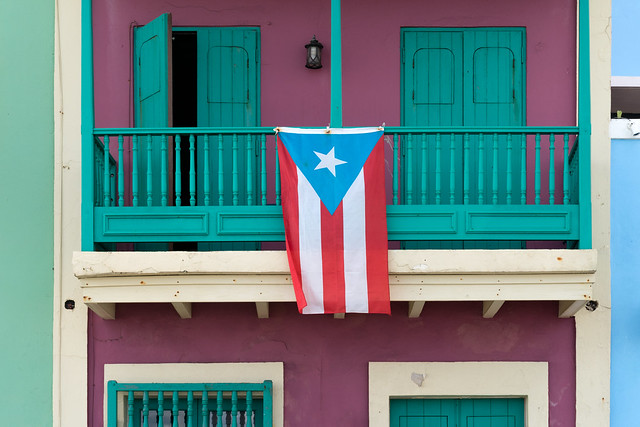
This is a guide all about backpacking Puerto Rico!
Welcome to Puerto Rico. Known primarily for great surfing, it’s heavily American influence and very attractive people (think Jennifer Lopez).
The reality is, is that this island has a hell of a lot more going for it than one might think.
In this article, you will discover the highlights and more interesting, less-known beauties of this gorgeous island.
Backpacking Puerto Rico
We’ll be looking at travel information, safety tips, and budgeting. Read on to get informed and start planning your own trip!

Puerto Rico is an island located in the Caribbean, that lies directly west of (and close to) the Dominican Republic.
Despite being recognized legally as a territory of the United States, this country has a tonne of character and history which makes it seems like a very distant cousin of its so-called family.
Is Puerto Rico worth visiting?
Yes, Puerto Rico is definitely worth visiting and whilst it is not completely unknown, with many people around the globe knowing of its existence, this island is a lot less visited than some of the other popular Caribbean islands, such as Jamaica and the Dominican Republic.
You can even compare Jamaica with Puerto Rico to see the differences.
Puerto Rico is home to stunning beaches, nature parks (such as the Maricao Jungles and El Yunque National Forest).
Not to mention, the diverse and friendly group of people who share the Caribbean, European and African roots.

For those from the United States, heading to Puerto Rico is a great choice of destination due to easy access with direct flights from almost all over the country.
The fact that the island uses the USD currency eliminates any issues with transactional charges and handling fees.
Is it safe to travel to Puerto Rico?
Whilst I was in Puerto Rico, I hardly ever felt in danger, and I spent most of my time out in the off the beaten path locations (not just within the safer parts of a city).
In the capital, San Juan, there are reports of theft and violence.
However, these incidents mostly occur between locals, due to the pressures of higher unemployment rates and their own debt crisis of the last decade.
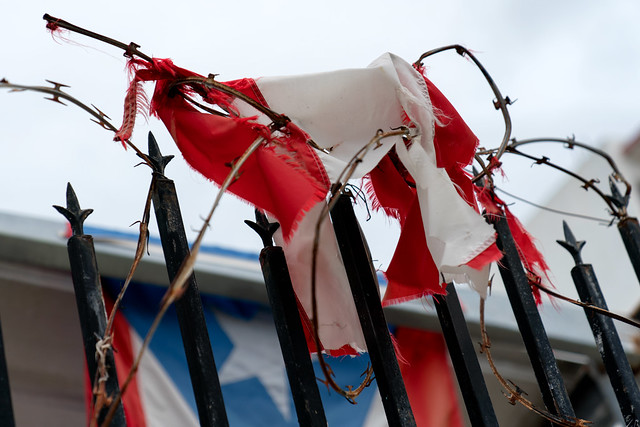
As I always say, no matter where you are, the danger is always proportional to when you are out and who you are with.
For example, walking alone at night in a rougher suburb would probably be dangerous even in developed countries like the UK and the USA.
Of course, it would make no sense to do the same here. Be aware at all times. See this Puerto Rico safety guide for tips on what to expect while here.
Getting In and out of Puerto Rico
As of 2020, the only viable way of accessing the island is by air.
There has been a history of boats crossing from the Dominican Republic, however, these are mostly illegal and not something you’d particularly want to get caught up with.
Another potential option is the cruise ships, which normally stop at San Juan whilst journeying around the Caribbean, which is great if you have the extra money to fund this style of travel!

The capital San Juan has great connections worldwide, with airlines such as Norwegian and Condor, and is most likely the city you will fly into.
US airlines Spirit and Delta make the trip from most US cities daily.
Another major airport is in Aguadilla, which is on the west coast of the island. Whilst there are direct flights to countries such as the USA, Mexico, and Canada, they are less often and will most likely cost more.
Puerto Rico Typical Costs and Budget

Cost Breakdown:
🇬🇧 1GPB – 🇵🇷 1.1USD$
My daily budget:
Up to $50 per day
Suggested daily budget:
$30-50USD
Puerto Rico uses the USD (United States Dollar $), which is useful not just for those coming from the States with US dollars.
Compared to most of Latin America, Puerto Rico, in general, will be a little harsher on the wallet, with accommodation costing a lot more here.
Puerto Rico Travel Cost
But also for those who have been traveling long-term and have started to get fed up with all the new currencies and estimations of numbers (common in Latin American countries).
Below is a breakdown of what you can expect to pay and budget for:
| Item: | USD ($) | GBP (£) |
| Dorm bed in a hostel in San Juan | $23-32 | £18-25 |
| Dorm bed in a hostel in Rincón | $26 | £20 |
| Private room in Vieques | $65 | £50 |
| Street food / an inexpensive meal | $3-5 | £2.50-4 |
| A meal in a mid-range restaurant | $7-15 | £5.50-11.50 |
| A beer in a local dive | $1-2 | £0.70-1.50 |
| A 6 pack of Medalla (local beer) | $4 | £3 |
| Bus from San Juan to Aguadilla | $12 | £9 |
| Return ferry from Fajardo to Isla Cuebra | $5 | £4 |
Is it possible to travel to Puerto Rico on a tight budget?
Most certainly, yes!
Using different platforms like Airbnb and Couchsurfing you can find alternative accommodation.
I try to travel on a more modest budget these days but see these hostels in Puerto Rico for ideas on how you can keep costs down.
Map of Puerto Rico
Thank you for taking the time to read this Puerto Rico backpacking guide.
Not only will you learn some of the best places to visit in Puerto Rico but also some ideas on what to do once you get to each place.
Use the interactive Puerto Rico map to navigate to the individual places in this backpacking Puerto Rico guide.
Backpacking Puerto Rico Itinerary
For this Puerto Rico 2 week itinerary, you will be making use of public transport and the ferry service in Fajardo.
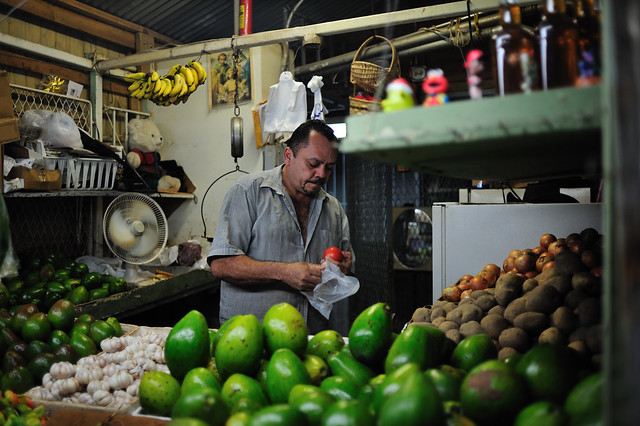
Car rentals are cheap but it is possible to do this on public transport alone.
If you are the adventurous type you could mix both car rental and use pubic transport intermittently.
- 3 days in San Juan: to explore the bustling capital, immerse yourself in a hotpot of culture and enjoy the nightlife this city has to offer.
- 2 days in Luquillo and Fajardo: to visit the bioluminescent bay, and then onwards for the Ferry port which will take you to the islands.
- 3 days in either Isla de Culebra or Isla Vieques: to discover the islands and enjoy the best of snorkeling opportunities in Puerto Rico.
- 3 days traveling : to the destinations of Guanica, The Maricao Jungle and Mayaguez for more off the beaten path experiences, with the Salto Curet Waterfalls one of the main highlights.
- 3 days in the West Coast: using either Aguada or Rincón as your base to explore the region. If you are into surfing, then you may want to spend even more time here.
This Puerto Rico itinerary is designed to guide you for 2 weeks. If you like you could spend more or less time in each place!
Feel free to chop and change the destinations to suit the amount of time you have.
Best Places to go in Puerto Rico
In this section, we look in detail into the paradise that we call Puerto Rico.
Firstly, I have added a map of the country including all spots that this guide will cover, which is useful for when planning your own route.

For perspective on the size of the country and traveling times, a journey between San Juan and Mayagüez takes 3 hours by car (around 200km).
San Juan and the North
Let’s start by digging a little deeper into San Juan and the North of the island to see what there is worth visiting.
San Juan
The capital and most likely the first area you will find yourself in when arriving into the country.
There are two parts – The old city and the (normal) city.
The old quarters, Viejo San Juan, is the little island section at the top of the city. There are some great beaches here, of which Escambrón and Playa Pena are my favorites.
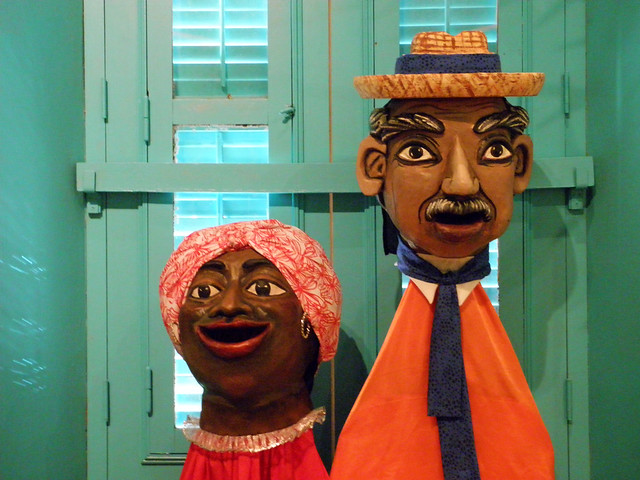
Also, you can include a visit to the old fort – Castillo San Felipe del Morro.
Then you have the more commercial areas of Condado, Isla Park and Ocean Park which are located downtown, where there are many hotels and restaurants around.
Places to stay in San Juan:
The beach in Condado is busy but has a more resort-style feel if that’s what you’re after.
💡Smart Travel Tip
Public transportation around the city is great, and a single bus fare will cost you around $0.70 ($5 for a day pass).
El Yunque
A tropical rainforest located about an hour’s drive east from the capital.
You’ll find tours leaving from San Juan which are most likely advertised in your accommodation, see places like Casa Flamboyant for more.

On a trip here you can see the infamous Coca Waterfalls and Dwarf forest, which the latter literally has vegetation (only found in Puerto Rico) that have stunted growth and has resulted in the phenomenon.
Coqui (Puerto Rican frog species) are also found here.
The East Coast and Islands
Here we’ll get acquainted with the East Coast and Islands so be prepared to see some the best places in Puerto Rico/
Fajardo
This town is located on the most extreme point of the eastern coast on the mainland.
The main reason for visiting is for the ferry port, which will take you to the islands of Vieques and Culebra.

As well as being home to Puerto Rico’s oldest lighthouse, you can also immerse yourself in stunning nature such as La Zanja.
Not to mention seeing Bioluminescent Bay at La Laguna Grande (the latter features algae that at night can give the water a luminous, bright blue color).
Luquillo
This town is famous for the Luminescent algae (see above in Fajardo) but also has untouched beaches which span for a good few miles.

Getting here from San Juan takes half an hour, and is also close to Fajardo.
I 100% recommend staying here for a bit to check out the bay and beaches if on your way from San Juan to Fajardo.
Stay in Casa Coral for around £20 per night, which is literally a stone’s throw from the beach.
Isla de Culebra
The less popular island is by far the best in my opinion.
Meaning Snake Island in Spanish, ironically this island isn’t home to snakes, the shape of the island doesn’t resemble anything close to that of a serpent!

As soon as you arrive to the port, you will see many vendors offering to take you around the island.
I recommend hiring a golf cart that you can hire for a half-day (or days if staying for a while) and exploring the island independently.
Places to stay on the East Coast:
Some great things to do here include reef snorkeling, swimming with turtles, and lounging around on the beaches.
Isla Vieques
This Island is more visited by typical holiday-goers, which means that prices for rooms/restaurants are a little steeper than Culebra.

It is also worthwhile to mention here that both Vieques and Culebra can be accessed using the ferry from Fajardo, with several running every day.
The ancient history and rich culture to be discovered here should have you wanting to extend your stay on the island.
Central and South Regions
Let’s get into the Central and South Regions of Puerto Rico and see how easy it is to get off that beaten track.
Marica

Most travelers tend not to stray from the capital or the west coast, however, this is one of the major reasons you should look into going off the beaten path in Puerto Rico.

Home to a tropical jungle and the breath-taking Salto Curet Waterfalls, this area of nature is given a lot less attention to that of El Yunque, which is favored more due to its close proximity to San Juan.
For me, Maricao gets the vote for the best off the beaten path destination in Puerto Rico!
Guánica
About an hour drive south of Mayagüez and 2.5 hours from San Juan lays this beachside town.
Home to over 30 beaches, the main point of interest here is Gilligan’s island (Cayo Aurora in Spanish) which can be reached by renting kayaks or paying for a small boat to take you there.

The Trasiego Seafood Restaurant is hands down the best option in the area for seafood!
San German
This is a small town on the foot of the Maricao jungle, closer to Guanica than Mayaguez.
Places to stay in the Central and South:
- Lazy Hostel → Vieques
- Vieques Good Vibe Green House → Vieques
- Parador Guánica 1929 → Near Ensenada Bay
When passing through the Maricao Jungle you will eventually exit into this town, and there is the Torre de Piedra which is a cool fort with nice views.

You can easily reach this town as a day trip from Maricao, Mayagüez or Ponce.
Ponce
Puerto Rico’s second-largest city lies on the south coast. Known locally as the Jewel of the South, this city offers very unique architecture,

For example, the Ponce Cathedral in the historic old town and also the cool style of Parque de Bombas (firehouse museum).
💡Smart Travel Tip
Take a day trip to Isla Caja de Muertos, a nature park on an island that can be reached by ferry (approximately 7 miles offshore).
The West Coast
Beach lovers get ready! The West Coast of Puerto Rico is one of the great locations with seaside towns like Aguadilla awaiting.
Aguada
One of my favorite towns. It has very laid-back vibes, with a few restaurants and services in and around the town.

This area has lots of untamed beaches, and you can go surfing quite close in nearby Aguadilla and Rincón.
For accommodation, I recommend the Grateful Souls hostel, which is a little further out of town, but in a great location with on-site bikes you can borrow to get around quicker.
Rincón
Famous for surfing, which draws competitors from all over the world in their annual competition.
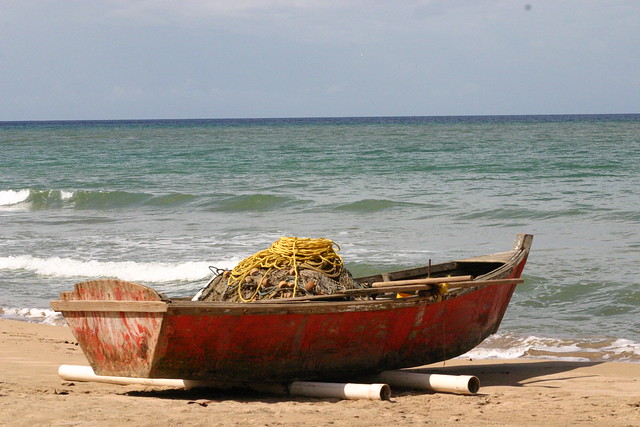
Many amenities and nightlife can be found here, with hands down the best clubs being Tamboo and Calypos.
For the more obscure traveler, you may be interested in heading to the Punta Higüera Lighthouse, where you can also visit a decommissioned nuclear plant!
Aguadilla
Another beachside town, with an international airport located close by.

If you want to access the west coast of the island, flying here is the most efficient (but not necessarily cheapest) way of going about it.
Places to stay on the West Coast:
- WSSM Surf House → Perfect for divers
- Serenity Rincon → Best for Couples
- Holiday Inn Mayaguez → Porta del Sol
Head to Survival beach and Crashboat beach for some relaxing time and to explore the nature around.
Mayagüez
Has a much more European feel, and is home to the only zoo on the island!
Visit local tuna factories or use the city as a jumping point for a trip into the Maricao jungle and/or south coast of the island.
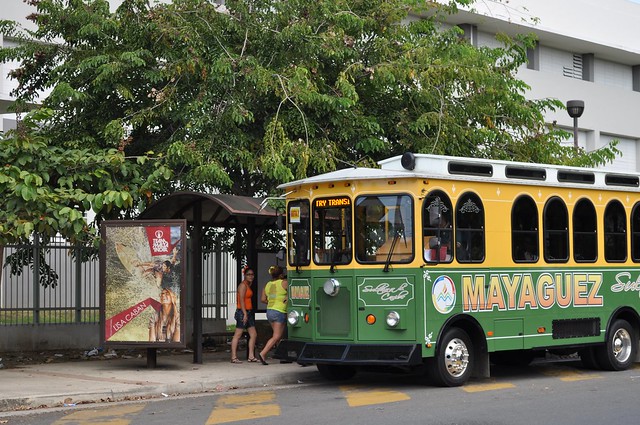
For food, head to Aqui Latte which has a variety of healthy food and snacks, as well as options for vegans.
Travel Tips for Puerto Rico
Whilst an important part of planning your trip involves knowing what you want to do, there are some other factors at play.
Like any island in the Caribbean, it’s equally important to also and the weather so hopefully it won’t impact your plans too much.
Best Time to go to Puerto Rico
Puerto Rico’s climate can be described as that of a tropical climate zone.
Temperature averages to around 80°F – 85°F all year, with precipitation a lot more likely between the months of June and November (this period coincides with the hurricane season).
If heading during this time, be aware and understand the risks of swimming and potential flooding.
Also, know that the locals continue their island life as normal, so it is not something to be too worried about!
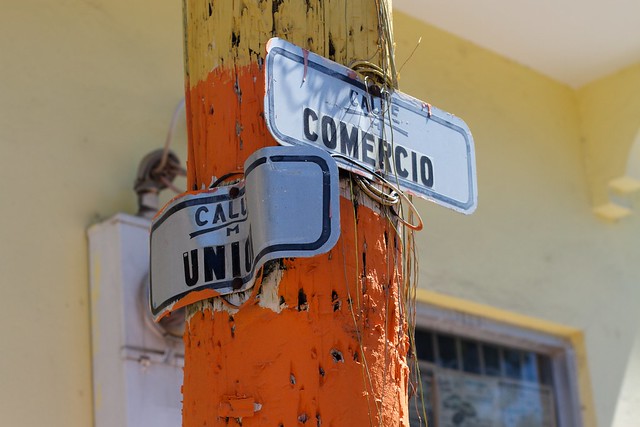
Weather across the region tends to be similar, however, there are a few things to note. San Juan tends to receive more precipitation due to its close proximity to the Atlantic Ocean. The South West tends to have hotter temperatures and less rain, whilst the Islands of Vieques and Culebra have a drier climate.
Got Travel Insurance for Puerto Rico?

Designed by travelers, for travelers, World Nomads covers more than 150 adventure sports and activities so you can explore your boundaries.
Backpacking Puerto Rico
So, there you have it. All you need to know about planning a great adventure to one of the Caribbean’s underrated gems.
Having read this guide you’ll now have learned some background info about the country, safety in Puerto Rico, and travel expectations.
You have this backpacking guide to popular places to go in Puerto Rico and less known wonders as well as some ideas on what to carry.
Whilst prices in this country can be deemed less attractive than others in Latin America.
It more than makes up in terms of the distinct culture found on the island, as well as some of the wonders including Salto Curet, El Yunque and the offshore Islands.
While you are exploring the Caribbean region, why not compare both Puerto Rico and Jamaica for more ideas of what is possible while here?
📌 Like this article? Pin it…


“Dear friend! Some links in this post contain affiliate links. Meaning, if you click through and make a purchase, book a hostel or sign up for a tour, I may earn a small commission at no additional cost to you. Your support means a lot and helps me to keep traveling and maintaining the quality of this site for you.”